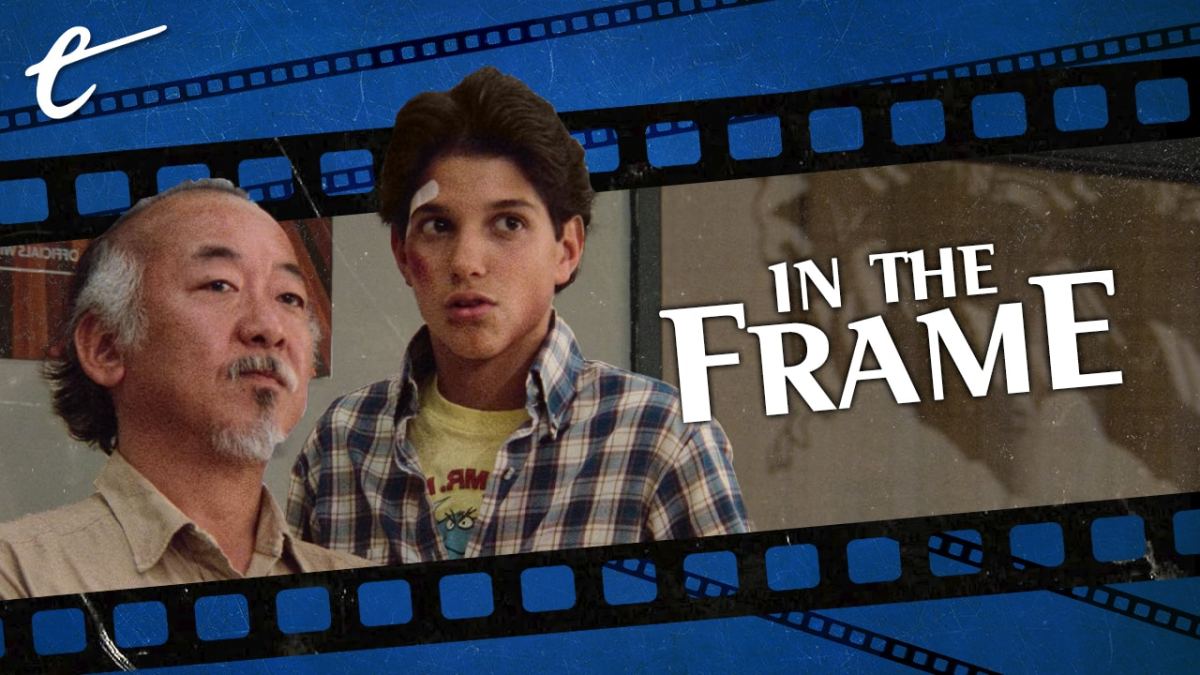Early in the second season of Cobra Kai, Daniel LaRusso (Ralph Macchio) finds himself accused of “cultural appropriation” after he releases an advertisement for his Miyagi-Do Karate. This is one of many examples of the self-aware humor of Cobra Kai, the spin-off of the Karate Kid movies that engages with the franchise’s long history in a playful and smart way. After all, the Karate Kid films offer a fascinating study of Hollywood’s complicated relationship with martial arts.
Martial arts movies date back to Shanghai in the 1920s and Hong Kong in the 1930s. However, the genre only really exploded in the United States in the late 1960s and into the 1970s. The release of Enter the Dragon in August 1973 was something of a watershed moment for the genre, with the film earning over $90M on a budget of $850,000. The cultural impact was seismic: Not only were cinemas flooded with martial arts films, but dojos opened across the United States.
Many cultural commentators have read the emergent popularity of martial arts in the early 1970s as a reaction to the trauma of the Vietnam War. “The spectacle of a physically small Asian male defeating seemingly insurmountable odds — of an Asian masculinity characterized by quasi-mystical fighting prowess — represented a way of coming to terms with a perceived failure of American masculinity and military might in Vietnam,” summarizes Anthony Wilson.
This relationship was complicated. Much like movies like Rambo or Return of the Jedi can be read as attempts to work through the trauma of Vietnam by constructing narratives that cast all-American actors and heroes as guerrilla warriors, there was a clear effort on the part of Hollywood studios to market martial arts movies with all-American protagonists. Critic David Desser points to the May 1973 re-release of the movie Billy Jack, about a Vietnam veteran who was also a martial artist, as a key moment in the genre’s evolution.

Bruce Lee pitched The Warrior, a show about a wandering martial artist, to Warner Bros. The company rejected his pitch, but coincidentally or not, a show with a nearly identical concept soon emerged, Kung Fu, starring David Carradine. Carradine did not know any martial arts when he was cast. Even in the pages of Marvel Comics, “Master of Kung Fu” Shang-Chi was upstaged by “Iron Fist” Danny Rand, even though Shang-Chi had premiered six months earlier.
Following the tragic passing of Bruce Lee, the martial artists who dominated American film and television were predominantly white: Chuck Norris, Steven Seagal, Michael Dudikoff, even Jean-Claude Van Damme. It arguably wouldn’t be until Jackie Chan came to America that an East Asian martial artist truly broke into the industry A-list. Indeed, it’s notable that Chan would be cast as Mr. Han in the 2010 remake of The Karate Kid, the mentor to Jaden Smith’s Dre Parker.
Taken as a whole, the Karate Kid franchise offers a surprisingly nuanced and complicated exploration of the relationship between the depiction of martial arts in American cinema and the artform’s roots in East Asia. The original Karate Kid is often compared to director John G. Avildsen’s other iconic sports movie, with Variety even describing it as “Rocky for kids.” This comparison is interesting, as the Rocky franchise itself navigates a different set of cultural anxieties specifically tied to boxing.
There are some uncomfortable moments where the Karate Kid films play into the worst clichés of contemporary martial arts films, telling stories of American protagonists who prove themselves superior to native practitioners. Interestingly, these tend to come to the fore in the films where the characters travel to Asia. The Karate Kid Part II finds Danny proving himself a better martial artist than Chozen Toguchi (Yuji Okumoto). The reboot finds Dre defeating Cheng (Zhenwei Wang).
However, the other films in the franchise are decidedly more nuanced and complicated. Both The Karate Kid and The Karate Kid Part III literalize the appropriation of martial arts by white Americans, even making a point to explicitly contextualize that appropriation by reference to the Vietnam War. This is most obvious in terms of the villainous Cobra Kai, the dojo operated by John Kreese (Martin Kove) and populated by a selection of young blonde men led by Johnny Lawrence (William Zabka).

During a tour of the dojo in The Karate Kid, Danny notices the framed photo of Kreese in his service uniform. Kreese is a Vietnam veteran. The Karate Kid Part III reveals that Kreese served with Terry Silver (Thomas Ian Griffith), who owns the Cobra Kai dojo. Kreese’s military service is a vital part of his backstory. When Kreese reunites with Johnny in Cobra Kai, he fabricates a record of military and mercenary work extrapolated from his service in Vietnam.
The Karate Kid and The Karate Kid Part III make it clear that Cobra Kai teaches a bastardized version of karate. The films contrast Kreese and Silver with the kindly paternal figure of Mr. Miyagi (Pat Morita), who takes Danny under his wing and teaches the young boy the true spirit of karate. The Karate Kid movies repeatedly emphasize the importance of philosophy and morality to Miyagi’s karate, a tradition that has been passed down for generations and can be traced back to Okinawa.
Miyagi is very much the focal character of the Karate Kid movies. Morita even earned an Oscar nomination for his work on The Karate Kid. It is notable that The Karate Kid Part II pivots to explore Miyagi’s backstory by sending both Miyagi and Danny to Okinawa. With the absence of Ralph Macchio in The Next Karate Kid, Miyagi became the only character to link all four live-action films. Even after Morita’s death, the writers on Cobra Kai refer to the films as “the Miyagi-verse.”
The Karate Kid firmly ties Miyagi’s history to the history of Japanese Americans. Danny discovers that Miyagi lost his wife and newborn son in the Manzanar Japanese American Internment Camp during the Second World War. Morita himself had been interned at Manzanar during the conflict. Miyagi also earned a Medal of Honor for his service. In The Karate Kid Part III, Silver correctly guesses that he served with the 442nd Regimental Combat Team.
Miyagi is repeatedly subjected to racial slurs over the course of the Karate Kid movies, occasionally by bystanders and often by Kreese or Silver. More than that, The Karate Kid Part III explicitly has Silver and Kreese weaponize cultural appropriation against Miyagi. Part of their plan to revenge themselves upon Miyagi and Danny for the humiliation visited on Cobra Kai in The Karate Kid is to effectively supplant Miyagi’s authentic karate with their bastardized form.

“You think this is the end of it, old man?” Silver taunts Miyagi. “I’m gonna open Cobra Kai dojos all over this valley. Hell, I might even teach for free. From now on, when people say ‘karate’ around here, all they’ll mean is Cobra Kai karate. John Kreese’s karate.” This is presented as a serious and existential threat within the world of the Karate Kid franchise, despite Miyagi’s repeated refusals to get drawn into combat with Kreese and Silver. This appropriation is a monstrous act in and of itself.
The Karate Kid Part III presents Silver as a comically evil stereotype. He is the living embodiment of the excesses of American capitalism, smoking cigars and giving orders from a jacuzzi as he plots to dump nuclear waste. As such, his desire to adopt and pervert Japanese culture plays as a parody of American anxieties about Japan in the late 1980s and early 1990s, which came across in contemporary films like Blade Runner, Black Rain, Die Hard, Rising Sun, and even The Punisher.
Hollywood’s history of erasing East Asian perspectives in stories drawing from the region’s culture continues to the present day, as in the controversy over the casting of Scarlett Johansson in the Hollywood adaptation of Ghost in the Shell. To be fair, the Karate Kid franchise is not immune from this sort of clumsiness. The remake is set in China, awkwardly glossing over the fact that karate is a Japanese martial art and so playing to the trend of treating East Asia as culturally homogenous.
As such, the Karate Kid franchise offers a surprisingly nuanced take on martial arts, even allowing for the occasional misstep. The Karate Kid and The Karate Kid Part III could easily have been straightforward and unironic examples of larger cultural trends, but they instead offered exploration and interrogation. The charm and wit of Cobra Kai caught a lot of people off guard, but maybe that shouldn’t be a surprise. The Karate Kid films have always been disarmingly complex.





